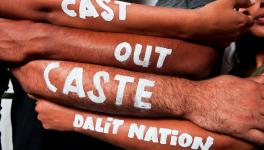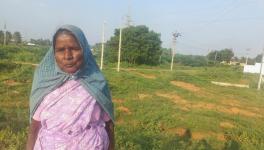New Study Recommends Policy Measures to Prevent Discrimination in Universities

Image Courtesy: DNA India
How inclusive are our universities? What kind of interactions are taking place in universities which are increasingly becoming diverse? A new report launched in Delhi on February 12 seeks to answer these questions.
Sangeeta Kamat, Anagha Tambe, Swati Dyahadroy, Sylvia Hurtado and Ximena U. Zúñiga have authored this report called the ‘Inclusive Universities: Linking Diversity, Equity and Excellence for the 21st Century’ which answers such questions. It is a collaborative study between the University of Pune and the University of Massachusetts Amherst.
India has seen a tremendous increase in student enrollment in higher education in the past 20 years. This increase has also exposed the inherent challenges for students from marginalised sections. Quite a few of them experience a university for the first time.
Educational institutions replicate and reflect the societal structures and hierarchies that exist outside the university space. The two cannot be different unless an active intervention is made by the stakeholders. In order to understand what the challenges in the universities are, and the adequate policy measures needed to address such problems, there was no extensive study so far.
The new large scale study looks at the issues socials groups face in a higher educational institution and the problems they faced in making maximum use of the opportunity, for the first time. Close to 2000 post-graduate students from the University of Pune were surveyed for the study. It was then followed by focus group discussions (FGDs) to capture qualitative aspects of the study. This study was conceptualized on a ‘campus climate framework model’ developed by Professor Sylvia Hurtado and others at the University of California, Los Angeles. This model of “campus climate research” studies tries to understand the racial differences in student success and academic achievement in higher education. And in the Indian context ‘campus climate model’ was used to understand caste and gender differences.

Source: From the study
The study has found that nearly 50 percent of the students are first time learners who attended a college. And more than 60 percent of the students are dependent on financial support either from the government or the university itself. This study has documented that majority of the students are ‘disadvantaged on multiple counts rather than one’. For example, Scheduled Caste or Scheduled Tribe students are mostly “from low-income and rural households, from regional language schools, and first generation learners, all at the same time.”
The study found that men who attended the university were from families that were less privileged compared to women. The report found “social disparities” in professional degree programmes like law, management and technology. The high economic costs involved to pursue these courses by design cater to the students who are from well off families. This study captures that trend and also shows that courses which have “low professional status” have a higher proportion of students from the “reserved category” students.

Source: From the study
What factors affected participation of students in class room and in the university?
The ability to have a fluent conversation in English had a significant bearing on the performance of the students on the university life, both academic and social. The students however said it did not have any bearing on “students’ assessment of their academic potential or their determination and aspirations.”
Role models play an important role for students to do well. For the students from the deprived communities it becomes even more important. This study shows that the demographic changes that occurred among the student population did not figure in faculty composition. “Faculty members remain overwhelmingly male, forward castes and from urban college-educated households”, the study stated.
The study did look at this aspect as well. The survey found that 56% of the students said that their teachers had high expectations from them and 43% students said that faculty motivated them to work hard. But it has also captured that the “faculty are not likely to engage students in classroom discussion” on the issues of “social justice or controversial issues”.
As a result of progressive social justice policies, Indian university spaces have now become a microcosm of our tremendously diverse nation. It is in these spaces our prejudices and misconceptions are cleared or do we get to meet and learn from “other” for the first time. This survey shows that “there is extensive cross-caste interactions among students with 80% of respondents stating that they interact frequently with students from a different caste background. However, (…..) the data shows that communication and interactions between men and women, between different language groups and between domestic and international students is infrequent and scarce.” This study also captured the classroom atmosphere and the learning habits of the students.
The study recommends that “Only an inclusive institutional environment that is responsive to disadvantages, inequalities and differences can help us achieve national goals of excellence and high standards in higher education” and forewarns “that without institutional foresight and leadership, compositional diversity may reproduce historical patterns of inequality, privilege and exclusion.”
Recommendations made by this timely study need to be taken note of by policy makers and the university administrators to achieve the ideals of “liberty, equality and fraternity” enshrined in the Constitution in letter and spirit.
Get the latest reports & analysis with people's perspective on Protests, movements & deep analytical videos, discussions of the current affairs in your Telegram app. Subscribe to NewsClick's Telegram channel & get Real-Time updates on stories, as they get published on our website.
























